This article was published in Scientific American’s former blog network and reflects the views of the author, not necessarily those of Scientific American
An evolutionary arms race during the blossoming of most multicellular life on Earth may have caused gelatinous comb jellies to armor up half a billion years ago. So says a team of Chinese scientists just over a week ago in Science based on three new fossils and three reinterpreted fossils from Chengjiang, China that date to 520 million years before the present.
Today there are just 150 described species of comb jelly -- also called ctenophores (“TEEN-o-fours”) -- translucent walnut-shaped creatures that patrol the open oceans for prey. They are bilaterally symmetrical like people, not radially symmetrical like jellyfish or starfish, and bear eight rows of combs bristling with cilia glued together to form “paddles” that glimmer rhythmically like a Vegas casino sign as they swim.
On supporting science journalism
If you're enjoying this article, consider supporting our award-winning journalism by subscribing. By purchasing a subscription you are helping to ensure the future of impactful stories about the discoveries and ideas shaping our world today.
Although their presumed close relatives the cnidarians -- the jellyfish, coral, and sea anemones -- evolved hard skeletons several times, modern comb jellies lack any sort of hard parts. Most people assumed this was because they never had any.
But comb jellies, like most soft-bodied organisms, do not have a good fossil record. So the discovery of a cache of apparent comb jellies from the Cambrian Explosion – the evolutionary burst of multicellular life that gave rise to most groups of animals alive today -- is a lucky strike indeed. The six fossils have, in common with living comb jellies, eight-fold symmetry boasting rows of cilia-bearing combs, a cup-like body, and a sensory “apical organ” located opposite the mouth. This organ likely sensed gravity as modern comb jellies have an organ that does the same thing in the same place. The authors suggest this suite of characteristics define the Ctenophora.
Unlike modern ctenophores, however, the fossils lack tentacles; are radially rather than bilaterally symmetrical; bear eight pairs of comb rows instead of eight single combs; and wear a skeleton with eight external "spokes” surmounted by eight armored plates that shield the sensory organ at the animal's apex. Some of the spokes are armed with spines, as you can see in the second reconstruction from left.
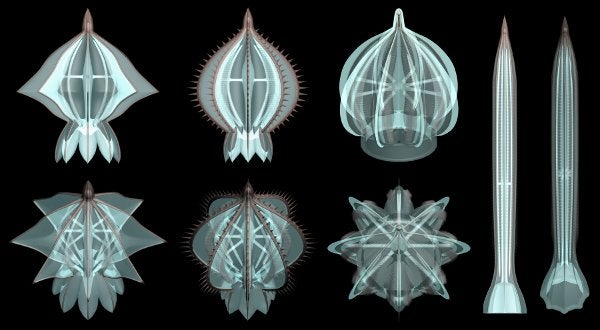
Reconstructions of Cambrian comb jellies based on fossil evidence. Their putative external skeletons are shaded reddish-brown. Fig. 3 from Ou et al. 2015. Click here for source.
The spines look like this in the fossils:
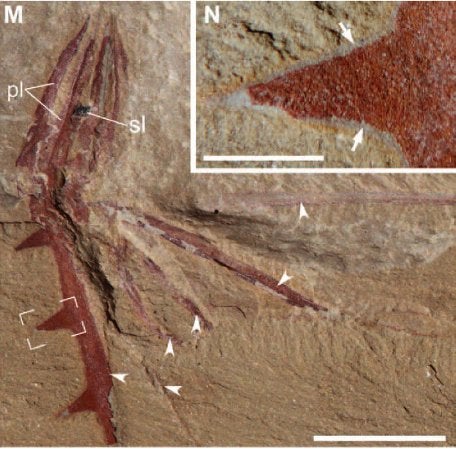
Apical organ with plates (pl), gravity-sensing statolith (sl) and skeletal spines (one is boxed at left). The arrowheads point to the radiating spokes of the animal's skeleton. N shows a closeup of an individual spine with arrows highlighting what appears to be an encapsulating membrane. Fig. 2 M and N from Ou et al. 2015. Click here for source.
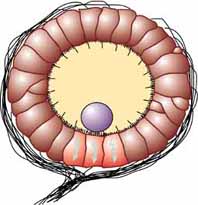
"Statocyst" by Davis, W. J. (1968) - http://caspar.bgsu.edu/~courses/Neuroethology/Labs/Images/Statocyst.jpg. Licensed under Public Domain via Wikimedia Commons.Caption
The gravity sensing organ is an interesting structure in and of itself. In modern comb jellies, it is a statolith, and it works a bit like the bubble level that builders use to detect how level a beam or foundation is. The statolith is a dense mineral or organic plumb bob. It sits in a spherical or ellipsoidal liquid-filled chamber lined with sensory hairs.
As the animal moves, inertia causes the statolith to move within the chamber, stimulating the nerves surrounding it and enabling the animal to gauge its orientation in space. You have a version of this system in your inner ear, and disorders of the organ cause people to feel disoriented and dizzy. Importantly, the presence of a statolith in these fossils implies they already possessed a nervous system.
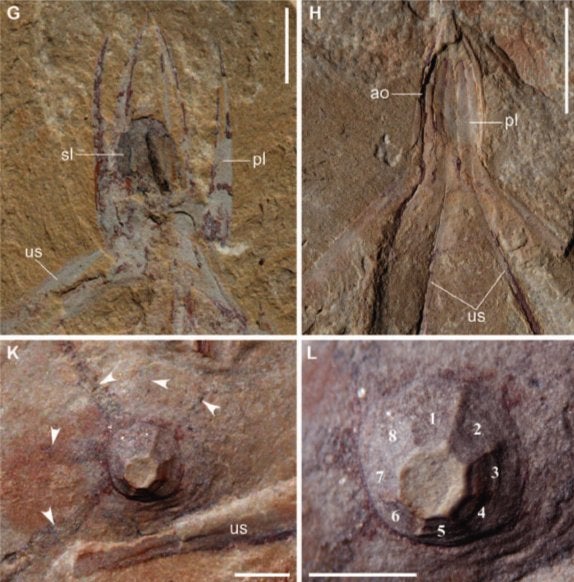
The apical organ (ao), individual apical plates (pl), statolith (sl), upper spokes of skeleton (us), and apical organ viewed from above(K,L) with individual armored plates numbered 1-8. The arrowheads in K indicate equally spaced bands that may be the remains of "underlying meridional canals". Fig. 1 G,H,K, and L from Ou et al. 2015. Click here for source.
If the scientists' fossil interpretations are correct, these animals also possessed a number of soft-tissue flaps and “lappets” that might have been used to propel the animals. This may have enabled at least one of their number -- the long skinny comb jelly in the reconstruction at top -- to be an agile and rapid swimmer. The fossils' form strongly resembles modern arrow worms, who are nimble swimmers.

A moddern arrow worm. "Chaetoblack" by Zatelmar - Own work. Licensed under CC BY 3.0 via Wikimedia Commons.
If so, it would stand in sharp contrast to living comb jellies, who generally swim weakly through the seas, steered by their sparkling comb-rows while snagging prey with hair-trigger cells called colloblasts. They work like the stinging cnidocytes of jellyfish and sea anemones, except instead of envenomating their prey, they simply glue themselves to it.
Comb jellies have long given evolutionary biologists difficulties. They are uncertain how the sponges, the jellyfish and corals (the cnidarians), the comb jellies, and the bilaterally symmetrical animals (just about all the other animals) are related to each other and in which order they split from the trunk of the tree of life.
Though the evidence for comb jelly skeletons does not help in resolving this particular dilemma, it does suggest answers to some longstanding questions about comb jelly evolution. Many have wondered whether the tentacles seen on modern comb jellies were present in their ancestors or evolved more recently. All modern comb jellies have tentacles with the exception of the comb jellies in the order Beroida, and the absence of any tentacles on the fossils tends to support the idea that the Beroida's condition is that of comb jellies' ancestors (although whether the jellies in Beroida lack tentacles because they lost them or because they never had them in the first place is a separate question).
Based on 58 physical traits gleaned from both living and fossil ctenophores, the scientists created a family tree in which the fossil comb jellies form a previously unknown new branch they are calling the Scleroctenophora ("hardened ctenophores").
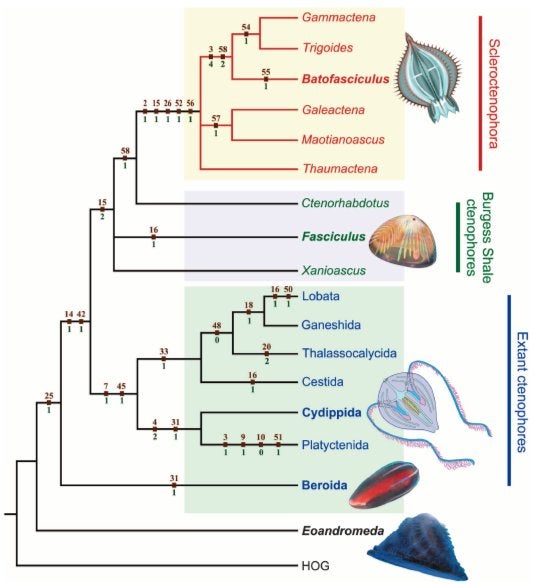
Fig. 4 from Ou et al. 2015. Click here for source.
Their analysis of the traits also suggests the Beroida never had tentacles and is the most basal branch in the existing ctenophores. This conclusion contradicts genetic evidence from living ctenophores, which had suggested that the Beroida once had tentacles and subsequently lost them, so this question remains unresolved.
Although the Chinese scientists feel confident that they are indeed looking at comb jelly skeletons, they are uncertain of the skeleton's purpose or composition. It could have served as a rigid support for the animal's tissues, or defense against predators or “adverse environments”. They believe that the skeleton was likely organic like horn, nail, or lobster shell rather than mineral like our bones, although a mineral skeleton can't be ruled out, they say.
Armored comb jellies are unexpected but not unique among invertebrates. The obscure small invertebrate groups of entoprocts, phoronids, lobopods (which include the crazy creature Hallucigenia may include today's water bears and velvet worms), and scalidophorans are unarmored today but also appear to have suited up in the Cambrian. This suggests, the authors say, that conditions in the Cambrian Explosion produced an arms race, as many groups of animals sprouted defensive weaponry against some sort of unnamed threat (intense predation pressure?). The Cambrian, it appears, was not a nice time to be alive.
Just why predatory or some other unknown pressure was later relaxed to the point where all these groups shed their formerly desireable skeletons is unclear. Regardless, this cache of comb jelly fossils constitutes a delightful evolutionary surprise and illustrates how genes alone can never tell us the full story of life on Earth. Fossils will always be essential, and luckily for us, new fossils bearing witness to surprising stories of evolution will continue to be unearthed for millennia to come, as the sedimentary beds that yield them run far and deep beneath our feet.
Let's end this post with some video of the sinisterly beautiful blood belly comb jelly, featured on this blog a few years ago. Monterey Bay Aquarium folk, I gotta hand it you – you guys know how to score natural history videos.
Reference
Ou, Qiang, Shuhai Xiao, Jian Han, Ge Sun, Fang Zhang, Zhifei Zhang, and Degan Shu. "A vanished history of skeletonization in Cambrian comb jellies." Science Advances 1, no. 6 (2015): e1500092.